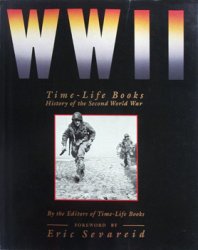We have shown how the extensive experiments with short radiowaves had been conducted for years by Marconi at sea. Hoping to turn the tide of his former life, hoping to throw off the yoke of his enslavements to a ruthless financial mogul, and hoping to return to the world some measure of the good which he felt he had taken, Marconi introduced his shortwave systems openly to the public. Neither for gain nor for fame, this new beginning literally signalled his own attempt to regain the lost flower of his youth, a route which he, very tragically, had not enough time to retrace. Had he the time however, Marconi would have eventually realized what Tesla had been insisting all along. The reasons for his rejection of Marconi wave technology had nothing at all to do with personal disfavor. The rebuttals which Tesla repeatedly made of Marconi wave radio were based on a discovery of more wonderful natural phenomena than Marconi had ever known. I am sure that, had the inquisitive yoimg Marconi been given those Teslian secrets from the start, he would have been its most prolific protagonist
In the absence of these awarenesses however, Marconi pursued what he thought far outweighed his VLF mammoths; the global radio circuits for which he had expended his energies, his fortunes, his iimocence, and his love. During the time of his self-exile, Marconi discovered how readily the small and compact short radiowave systems could propagate signals to great distances with clarity. Shortwave was portable and required far less power to go an equivalent distance as VLF waves, apparently relying on the skies for their great distance-reaching capabilities. To him, short radiowaves represented a wonderful new potential, by which small stations could communicate freely and without extensive expenditures of finance and technical dimension. Shortwave represented a new social revolution in world communications which could not be owned by monopolists, nor truly regulated by bureaucracies. This was Marconi’s way of casting fibre among his bridges.
Study of the period journals reveals that military radio science seemed completely captivated by the advancements which Marconi introduced after his abandonment of VLF systems. It seemed as though, dominated by his early training of military cadets, military radio corpsmen were largely uncreative. Both periodicals and patent records actually support this outlandish claim. Military radio engineers did not begin experimenting and innovating until long into the 1930’s, and that the result of “imported creativity”. Marconi’s introduction of shortwave systems, triggered an enormous new impetus to the communications arts. The minuscule shortwave radio transmitters were, by comparison with his gigantic VLF wave stations, a new revolution in communications. It was through shortwave that radio actually became a social force. Civilians were thus given a rare access to the world. No earthly point was inaccessible.
Marconi, Fessenden, and others reported the reflection of short radiowave signals from various high altitude layers. Beginning vdth high altitude clouds in the Tropopause, and reaching up into space, the reflection of shortwaves became more than a fascinating natural study. In certain conditions, it was found possible to “skip” signals across incredible, normally impossibly great distances. The conditions of these reflective “skips” varied with weather, season, time of day, with lunar phase, and even with planetary configurations (Austin, Appleton, Nelson). Though few comprehended the reasoning behind these strange phe-nomenci, none argued vdth the empirical observations that they contributed to very long range, shortwave transmissions. It was then that military researchers began funding scientific researchers to study these natural variables for them. Developing a solid conununications link among military branches and their divisions everywhere remained a command base priority. They themselves were unfortunately far too sleek to be creative in their own right. Increased civilian experimentation with shortwave radio brought new discoveries to the scientific bibliography, and this formed the core of every avenue which military would pursue. In the absence of Marconi, there would be ample resource on which to draw.
Here was a prolific period of design and development, amateurs everywhere becoming the inventors of completely new radio components and refinements. These individuals, highly experienced in both transmitting and “pulling signal” from the skies, formed the very heart of a new radio consortium which military came to respect and eventually employ. Several previous experimenters had performed demonstrations of highly directional ultrahigh and superhigh frequency electrical alternating waves long before Marconi. David Hughes, Heinrich Hertz, Augusto Righi, Sir Oliver Lodge, Daniel MacFarland-Moore, Christian Hulsmeyer, and others discovered means for beaming extremely high frequency waves in beams to great distances. Early experiments proved that strong spcirkgap oscillators, when enclosed in copper pipes of various dimensions, projected highly directional radio beacons. With the improvement of oil-quenched sparkgaps, electrical discharges became greatly intensified, and powerful beams could be made to carry telegraphic information. The sparkgap beam projectors of most experimenters were designed to carry communications signals. A few others however used these beams for distanceranging. One of these early systems belong to Christian Hulsmeyer, whose “radio searchlight” was an early SHF wave system (1904).
Projected and reflected from metallic objects, the basic principles which later led to a host of radio sciences were briefly examined. These primitive UHF and microwave apparatus formed the basis of modern communications systems. Some experimenters discovered that these energies could produce heating effects at a distance. Others retrieved usable electrical energy by rectifying these otherwise high frequency alternating wave beams. Experimenters began investigating the possibility that these extremely high frequency radiowaves might provide better transmission properties with low power application. It was anticipated that increased frequency would yield increased communications “reach”. These researches began with transmitters which could beam vocal signals across a meadow. They were, in fact, barely improved versions of those used by Augusto Righi and Oliver Lodge. In time, a new application of vacuum tubes began developing and extending the available radio range to unheard frequencies. “Superhigh” radiowave frequencies, though invisible, had concentrated power approaching that of arc hght beacons.
The decade between 1920 and 1930 proved to be a most remarkable demonstration of the inventive resource represented by an international consortium of radio experimenters. New super high frequency generators appeared everywhere, patents abounding. Vacuum tubes of a great variety began coming into vogue, as amateur experimenters investigated the mysteries of SHF radiowave transmission. Invented by a great population of enthused amateur experimenters, the flood of superhigh frequency vacuum tube generators represented a trend which, in the minds of those who so invented, desperately hoped to imitate Tesla and his distinctive systems. Inadvertently, a few young inventors actually did succeed in rediscovering somewhat of his technology; but these were weak and undeveloped embodiments of systems which Tesla himself had already greatly surpassed. The inventors who brought their Teslalike systems forward were not disfavored, but were not encouraged to pursue their revolutionary trends. Therefore, these inventions came as “one hit wonders”, there usually being nothing more from the names which so fervently produced them. Nevertheless, there are those few patents which represent this accidental replication of Teslian findings in impulse technology. Impulse transmitters of Roberto de Mouro, Bela Gati, Frederick S. McCullough, Conrad Reno, and others are true wonders; representatives of that phenomena in which repressed discoveries continually reemerge.




 World History
World History









